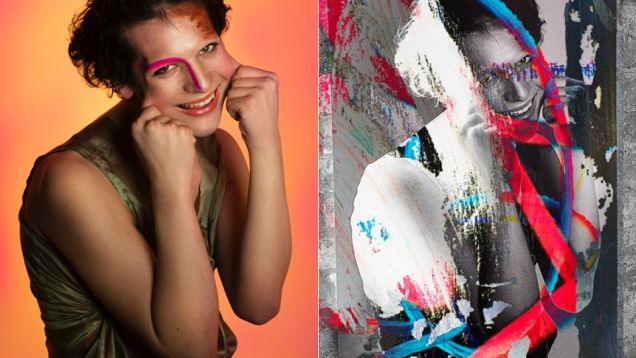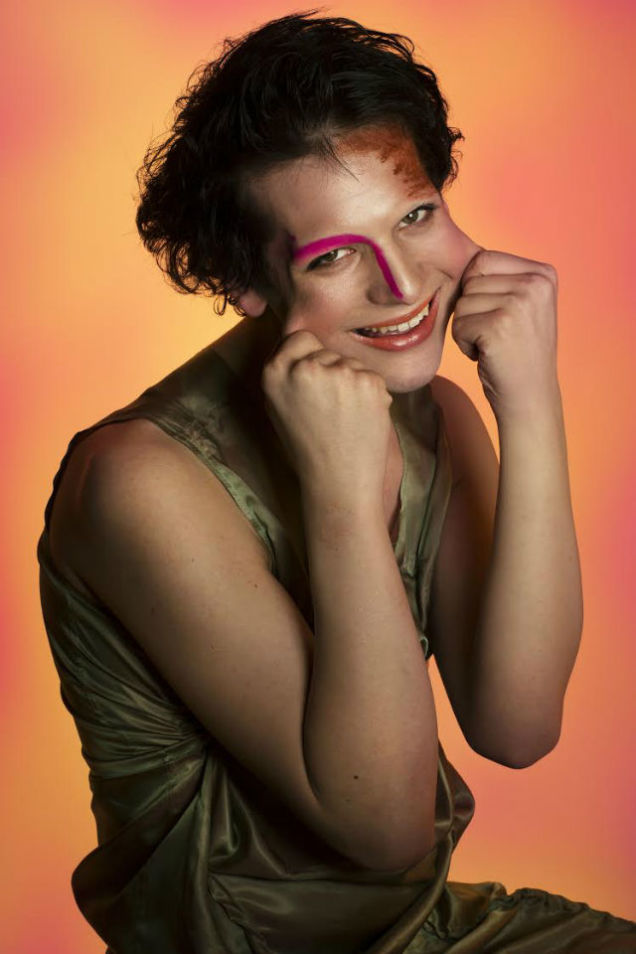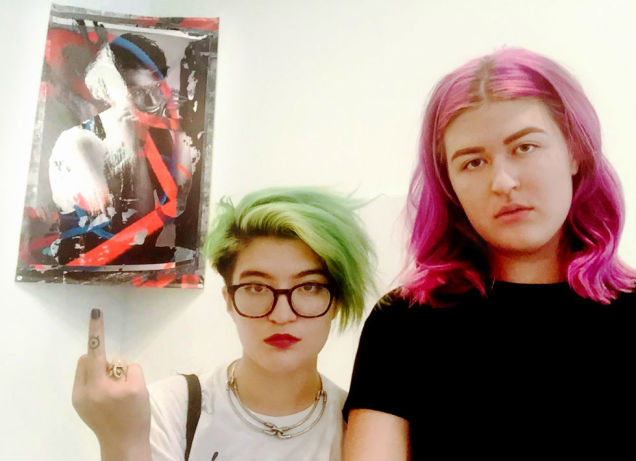Art & Exhibitions
Imitating Richard Prince, Yale Graduate Zak Arctander Appropriates Feminist Photography
It's fair use, but it is fair?

It's fair use, but it is fair?

Sarah Cascone


Arabelle Sicardi and Tayler Smith, Cheeks (2014).
Photo: Arabelle Sicardi and Tayler Smith.
Two artists are accusing a recent Yale MFA graduate of appropriating one of their photos without giving them credit.
Former BuzzFeed beauty editor and Rookie contributor Arabelle Sicardi and photographer Tayler Smith were surprised to find an image of their 2014 work, Cheeks, published in the New Yorker and credited to artist Zak Arctander.
The original photograph is of transgender actress and model Hari Nef. It was included in the duo’s exhibition, “Most Important Ugly,”at New York’s American Two Shot, a clothing store/gallery, last summer.
Arctander converted the image to black-and-white and partially obscured the portrait with graffiti, turning it into a 60 x 36 inch print on vinyl. The artist is a recent MFA graduate of Yale University, and the artwork in question is currently on view through June 27 at New York’s Danzinger Gallery in “Lovely Dark: Yale MFA Photo 2015,” which will also be on view at Regen Projects later this summer.
artnet News reached out to Arctander and the Yale School of Art’s associate dean, artist Samuel Messer, for comment, but had not received a response by the time of publication.

Arabelle Sicardi and Tayler Smith, Cheeks (2014), and Zak Arctander’s Cheeks (2015).
Photo: Arabelle Sicardi and Tayler Smith/Zak Arctander.
A description of the Yale exhibition on the Danzinger website notes that “the artists in this exhibition have been guided, critiqued and in conversation with a panel of critics” that includes no less a personage than the appropriation artist du jour, Richard Prince.
“I am at least comforted by the fact this wasn’t a ploy by Richard Prince, to whom Arctander owes his context as an appropriator,” Sicardi noted in an editorial on Jezebel, where she is also a contributor.
Prince’s recent series of prints based on the Instagram images from other artists, celebrities, and Internet users has been widely covered in the news in recent months.
Despite the controversy appropriation art engenders, Prince and Arctander are within their legal rights to create such work.
Gallery owner James Danzinger defended Arctander’s Cheeks, telling Jezebel that “I was not aware of the origin of the image, but having spoken to Zak, who explained that his artwork…is a composite of a picture of that picture converted to black and white and layered with a picture of graffiti, I feel that this falls well within what would be considered legitimate appropriation and transformative use.”

Arabelle Sicardi and Tayler Smith, in front of Zak Arctander’s Cheeks (2015), which they allege appropriates their photograph.
Photo: Arabelle Sicardi and Tayler Smith.
For her part, Sicardi is highly critical of the fair use laws that allow for Arctander’s appropriation of her work, lamenting that “we’re going to be written out of the authorship in Arctander’s Yale MFA gallery exhibition and accompanying New Yorker piece—like many women before us.”
“I wonder how many other women, how many other queer artists, how many other trans kids will be collected, silenced, and appropriated from while we wait for the law and those who create it and uphold it to finally listen to us,” she added.
Of course, appropriation art does cut both ways, with female artists such as Deborah Kass, Sherrie Levine, and Sturtevant using the work of their more famous male counterparts in order to comment on or rewrite the art historical narrative. However, these artists do not profit from the appropriation of lesser-known works. They’re punching up, rather than down.
As Paddy Johnson says in an interview about Richard Prince: “It’s one thing to reproduce something when very few artists are doing that and open up the field for artists to do whatever the hell they want. It’s another thing to do the same thing 30 years later in a culture where everyone copy-and-pastes and takes screen shots.”